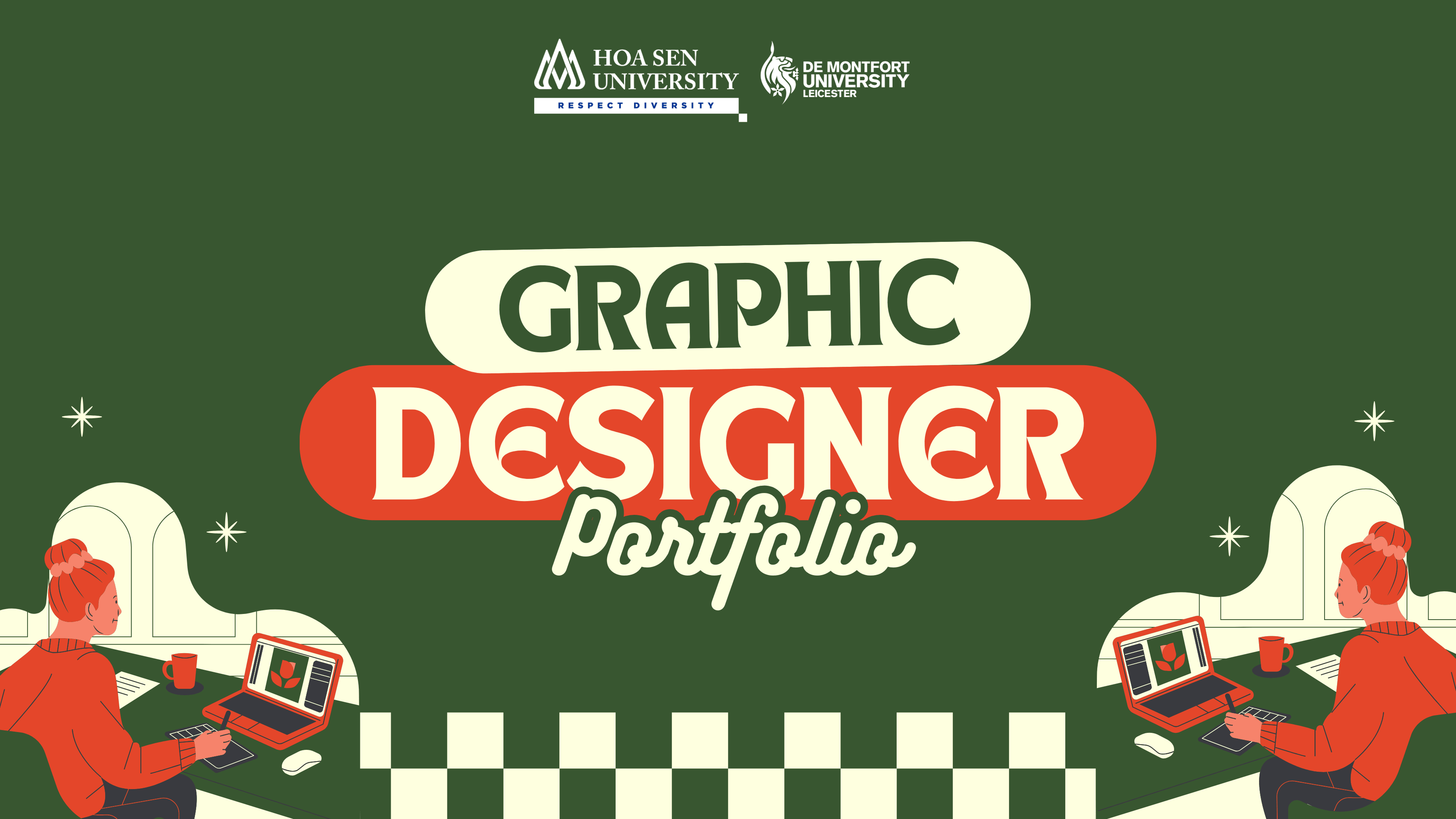How to Create a “Professional Portfolio” for Designers
In the competitive field of graphic design, a professional portfolio isn’t just a place to showcase your work; it’s the ultimate “weapon” to make a strong impression and unlock your dream career opportunities. So, how do you build a truly effective professional portfolio? Let’s explore the key secrets!

1. What are Graphic Design Portfolios?
Graphic design portfolios are visual presentations of completed projects. They are more than just a collection of your work; they demonstrate your quality, pride, and dedication as a designer. This is how designers impress potential employers and clients, proving their professional skills and unique creative style. A “professional” portfolio is crucial for opening doors to exciting career opportunities and projects in the graphic design industry.
2. Why are “Professional Portfolios” So Important for Designers?

2.1 For Graphic Designers:
- Prove Practical Skills and Abilities: Your portfolio is the most direct and powerful evidence of what you can do. Instead of just saying “I can design logos” or “I’m good at typography,” you show it through specific projects you’ve completed.
- Make a Strong First Impression: In a competitive market, a professional portfolio helps you stand out from the crowd of applicants. It’s a critical “first impression” with potential employers and clients.
- Unlock Quality Job and Project Opportunities: An impressive portfolio attracts the attention of companies, agencies, and clients looking for real talent. It’s the “key” to better opportunities.
- Confidently Negotiate and Value Yourself: When you have a high-quality portfolio, you have a solid foundation to be more confident in negotiating your salary and service fees.
2.2 For Employers and Clients:
- Objectively Evaluate Candidate/Freelancer Skills: Portfolios provide a visual and concrete look at a designer’s experience, skills, and working style, helping them make more informed hiring or collaboration decisions.
- Save Recruitment Time and Costs: Instead of sifting through numerous resumes and interviews, employers can quickly get an initial assessment of a candidate’s abilities through their portfolio.
- Ensure Alignment with Project/Position Requirements: Portfolios help employers and clients determine if a designer’s style and experience match the specific needs of a project or the open position.
- Build Trust and Professionalism: A professionally presented portfolio demonstrates a designer’s seriousness and commitment to their work, thereby building trust with potential partners.
3. Build a Professional Portfolio Using These Important Principles:
- Define Your Goal: Your portfolio should be tailored to a specific purpose (job search, freelance work, personal branding, scholarship applications) to guide your project selection and presentation method.
- Select Strategic Projects: Prioritize work that showcases your core strengths, aligns with your career goals, and demonstrates a variety of your professional skills (branding, UI/UX, print materials, packaging, illustration).
- Design a Professional Interface: The interface should be aesthetically pleasing, well-organized, easy to navigate, and consistent with your personal design style. Avoid distracting decorative elements.
- Develop Clear Content: Each project needs a concise description including the project name, your role, the main idea, your problem-solving approach, and the tools you used.
- Maintain Regular Updates: A portfolio is a living entity that requires regularly adding new projects and adjusting the layout and descriptions to reflect your current capabilities.
4. Key Considerations for Building a Professional Portfolio:
- Before designing your portfolio, research the requirements of where you are applying. Employers often select profiles that align with their company.
- Define a suitable, minimalist style and layout that clearly showcases your personality.
- Use colors and fonts minimally: do not use more than three color palettes and three fonts in your profile.
- Always keep your portfolio updated, because submitting an old portfolio won’t show employers your current abilities.
- Don’t just focus on the internal content and neglect the design of your portfolio cover.
5. Conclusion:
Building a professional portfolio is a solid stepping stone for you to establish yourself in the graphic design industry. If you aspire to become a sought-after graphic design expert, equip yourself with a professional portfolio right now. And if you are looking for a well-structured, professional training environment to build a strong foundation for your creative journey, don’t miss the opportunity to explore the Bachelor of Graphic Design programs at Hoa Sen – De Montfort, a place that empowers Vietnamese design talents to reach new heights.
See more:
Important Changes in UK Study Abroad Policies in 2025
Working in the UK: What You Need to Know After Graduation
——————————————–
CONSULTATION CONTACT: Hoa Sen – De Montfort Program (Institute of International Education)
Apply online here
Register for consultation here
📍 Address: Room 1007, 10th floor, 08 Nguyen Van Trang, Ben Thanh Ward, District 1, Ho Chi Minh City Phone: 028 7309 1991 (Ext: 4792)
Hotline: 0888 275 276
Email: demontfort@hoasen.edu.vn
Website: www.hoasen.edu.vn/demontfort/
















